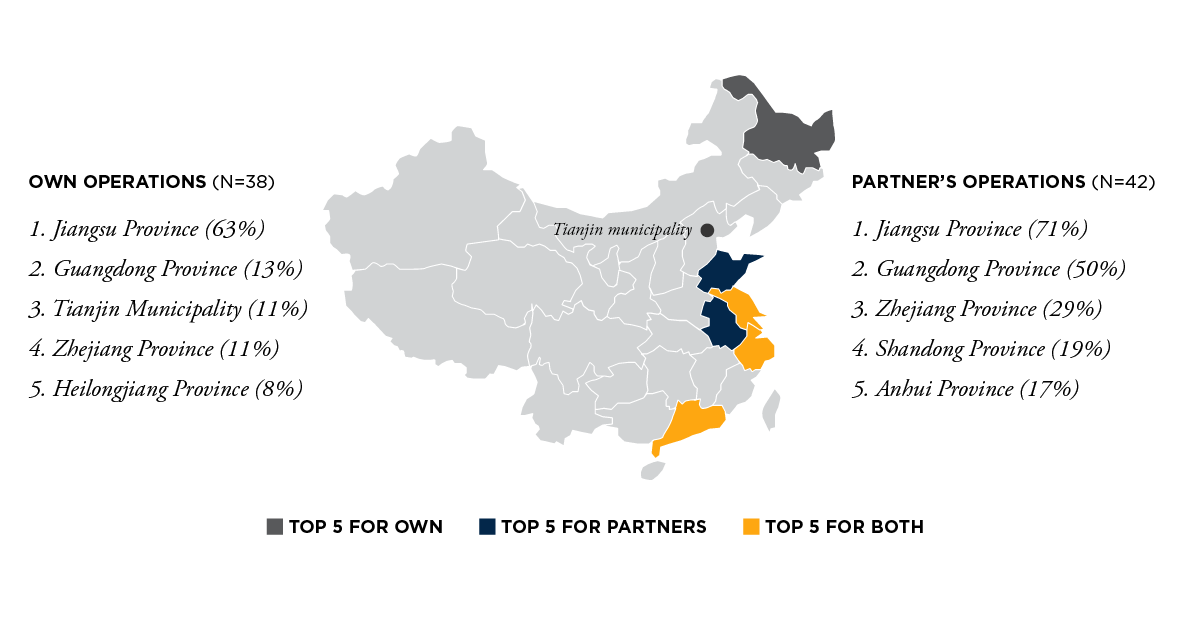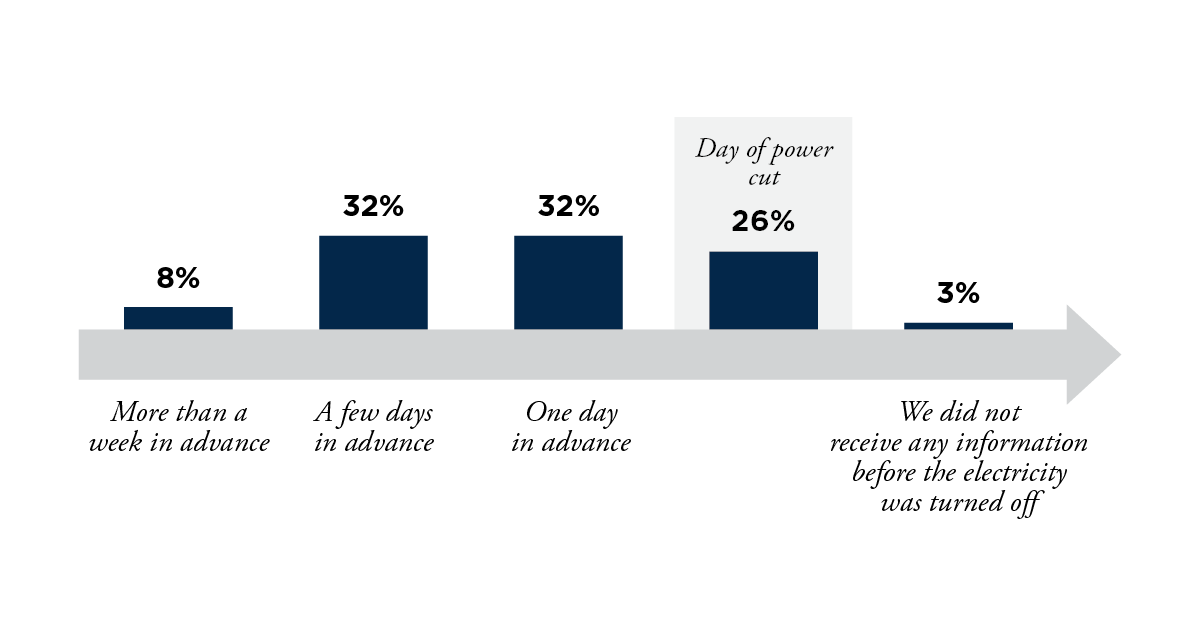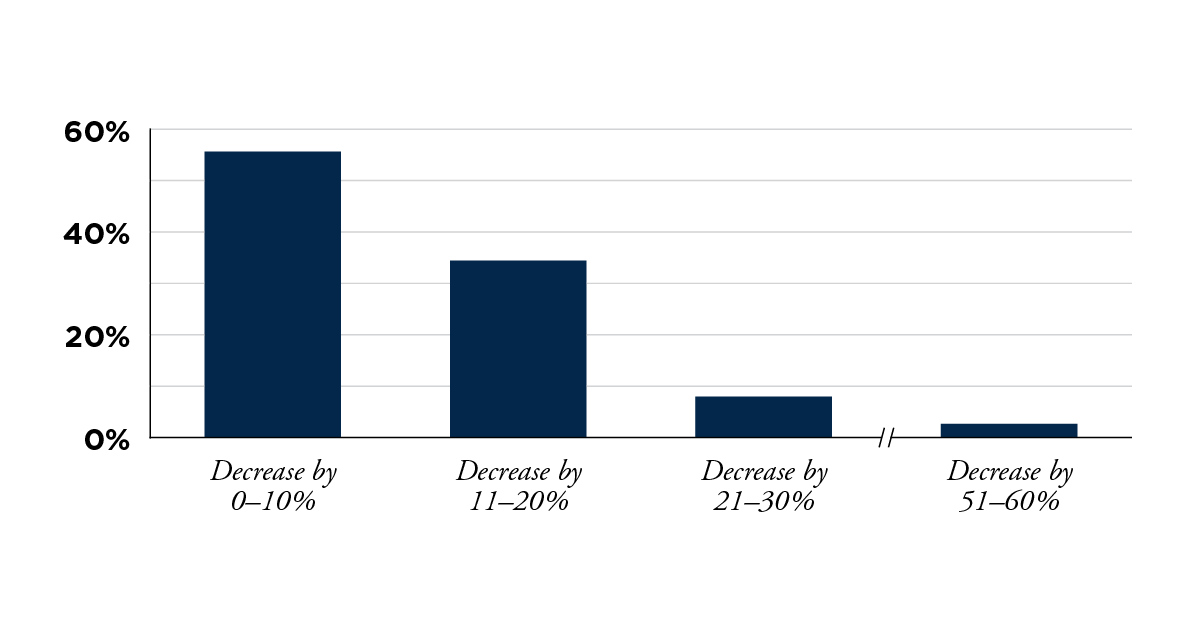In order to better understand the impact of the power outage, and also what information the affected companies have received from relevant authorities, the Swedish Chamber of Commerce in China and Business Sweden have carried out a survey among Swedish companies operating in the market. To understand supply chain impact as well as what plans are put in place to mitigate similar situations in the future, the survey has not only covered companies with operations in the affected provinces, but also in other parts of the country.
More than half of the companies are impacted
The power cuts have clearly been felt among Swedish companies. Out of the 92 respondents, 55% state that either their own operations or the activities of their business partners are impacted by the electricity outages. 39% experience an impact on their own operations, especially in their production lines. There have also been some shortages in other parts of the value chain, such as warehousing, as well as in administrative office activities, where for example lack of air conditioning has made it challenging to perform regular work. It is particularly larger companies being hit the hardest, with 55% of large enterprises, defined as having more than 1000 employees globally, responding that their own operations are impacted.
Initial indications of power cuts being just a short-term issue, expected to be rectified after October holidays, have proved wrong. Only 11% of the impacted companies have gotten their electricity back to normal levels by the time this survey was carried out, and among the remaining part who still experience outages only half of them have received information about the expected frequency and length of the power cuts.
43% of the respondents have business partners who are affected, and just like the situation for the companies' own operations, only 10% have returned to normal operations by the time of the survey. The uncertainty in supply chains has forced some Swedish companies to start looking for alternative solutions, but very few of the respondents have managed to identify viable options. Hence, 60% of the companies with impacted partners conclude that there are no other alternatives but to wait for their partners to resume operations.
In terms of geographical location of the impacted operations, a majority of the Swedish companies who are directly hit by the shortages are located in Jiangsu province, while supply chain partners are also having challenges in Zhejiang, Guangdong, Shandong and Anhui.
Location of impacted sites for the operations of Swedish companies and their partners
Share of respondents for five regions with highest share of responses

Lack of information is a key challenge
Despite indications during 2021 that energy consumption would need to be reduced – with a number of provinces failing to reach their reduction targets and with increasing coal prices rendering power production a loss-making business – the sudden power cuts came as a surprise to most companies and was preceded by very limited information. Only 40% of the impacted companies received information more than one day in advance, and less than 8% were fortunate to be briefed more than a week before the cut. It goes without saying that it was impossible for most companies to react before the power was turned off.

How long before the outage Swedish companies were informed of the power outage
Share of respondents, N=38
Information sharing during the outage has somewhat improved, with 68% of the impacted companies having managed to receive updates on the situation from relevant authorities. However, only half of those companies receive information proactively – the other half states that they have to reach out to authorities in order to obtain updates.
It is highly concerning that almost one third of the companies have not yet managed to obtain the needed information. This is also a call-out in the commentary from several companies, i.e. that the inadequate information is counteractive towards the emission reduction ambitions, where a lot can be achieved through proactive planning and communication.
The temporary unplanned halts need to be compensated for, and 62% of the impacted companies state that they will need to increase their operations in the affected sites once the provision of electricity has returned to normal. This puts additional strains on the grid, particularly now when winter is approaching and energy is also needed for heating. The situation is neither optimal from an environmental perspective.
Problem not yet solved
The magnitude of the power issue is becoming clearer, and several companies are already estimating a production loss in 2021 as a result of the shortages. 45% of the impacted companies estimate the impact to be more than 10% of the annual production, which in many cases is more than a month worth of output.
Estimated impact in % on 2021 production from the power outage
Share of respondents, N=38, Not listed options had no responses
Besides the fact that the power cuts in September remain for most of the companies, very few believe that this shortage is a one-off. Almost half of the respondents predict continued rationing on-and-off, and 28% believe the shortages will be more severe during the winter period.
This predicted long-term impact, and excessive uncertainty, not only poses a challenge for ongoing activities in China, but also risk influencing entry and expansion decisions among companies. 44% of the companies expect an outcome of the power shortages to be increased energy prices within their industry, which is now already happening through a gradual implementation of market-based pricing by the authorities.
Collaboration is the only way forward
The survey clearly shows that the power challenge is real. Even though a number of anecdotal examples have been shared over the last couple of weeks, it is important to get the facts on the table and understand the magnitude of the shortages.
The high response ratio in a very short time frame moreover highlights that this topic is top of mind for many Swedish companies in China. While companies understand that the way power is generated and consumed needs to transform in order to meet the ambitious climate targets of China and the World, there are clear concerns in terms of how the power cuts have been managed.
There is therefore a need for increased collaboration across industries and authorities to be able to find a sustainable way of managing the power challenge moving forward. In this, better planning and proactive communication will benefit all stakeholders involved, and allow business leaders and authorities to jointly work towards a carbon neutral society.





